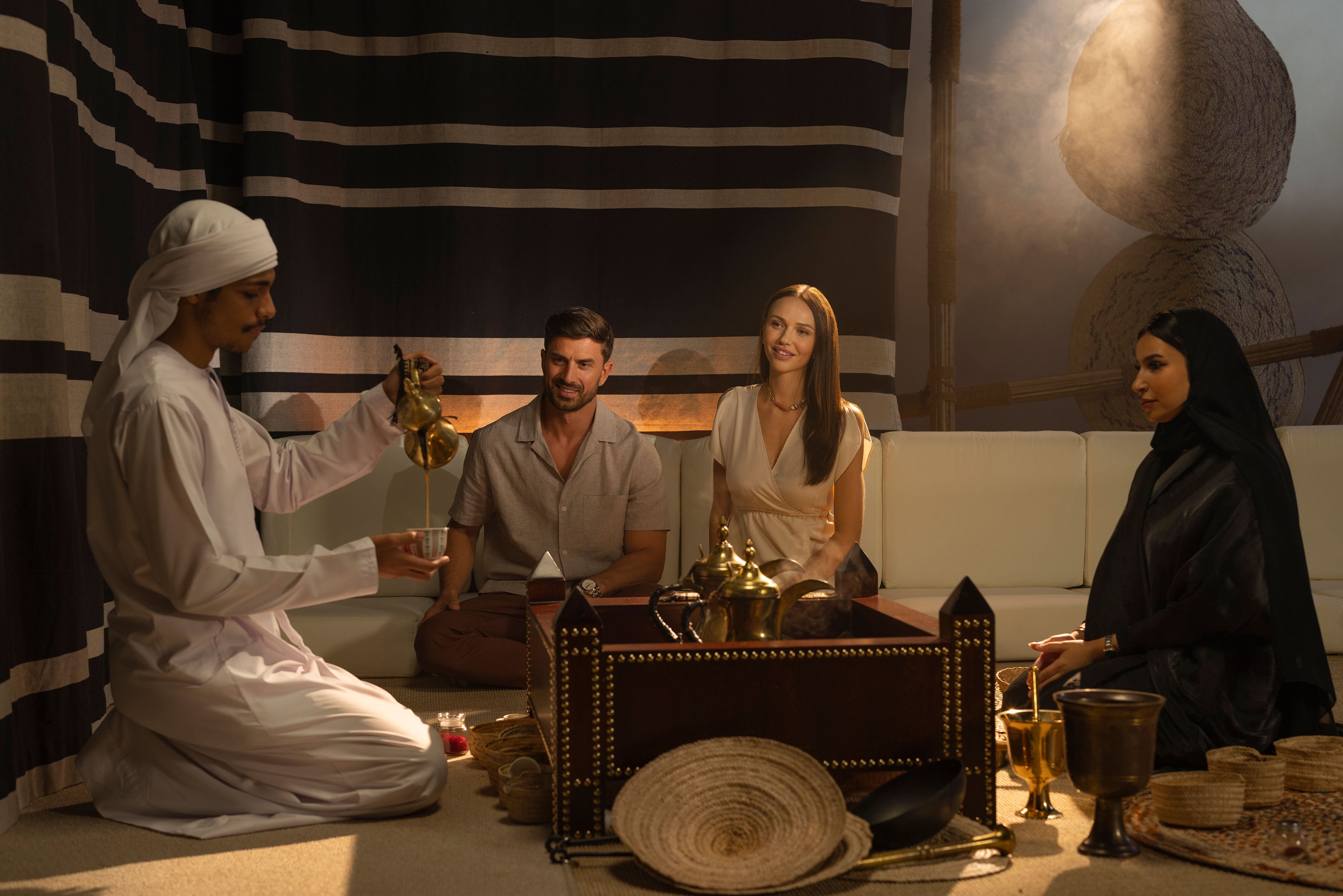See All
Arabic coffee, or Gahwa in the Emirati dialect, has been a cornerstone of Arab culture for centuries. Its deep significance led the UAE, along with Saudi Arabia, Oman, and Qatar, to successfully apply for its inscription on the UNESCO Representative List of the Intangible Cultural Heritage of Humanity in 2015.
Bait Al Gahwa is a cultural initiative created to highlight the intricate methods and rituals of preparing and serving Gahwa to guests. It's a sign of hospitality, and it represents the strong social, political, and cultural ties that define Emirati society. The experience explores every step of the process, from roasting and grinding the beans to boiling and infusing the coffee with distinct flavours. Each stage follows specific customs and uses traditional tools, all governed by the unique social etiquette of the UAE.
House of Artisans
If the world of culture and craft intrigues you, stop at the House of Artisans, a charming centre tucked within Qasr Al Hosn. Here, you will encounter the Emirates' intangible heritage, carefully preserved and brought back to life.
Spend quality time attending a training course, an educational workshop or visiting one of many public events to immerse yourself in traditional Emirati crafts of the past. You can witness local artisans bringing beautiful artworks to life and purchase them as souvenirs to take back home with you.
The heritage and refined works showcased here caught the attention of Comité Colbert, the French luxury association made up of prestigious brands, including Dior, Chanel, Louis Vuitton, Hermès and more. In 2019, they collaborated with the centre's local artisans to promote cross-cultural dialogue between France and the UAE.
With a craft passed down from generation to generation, a partnership like this only further solidifies the Emirati identity.
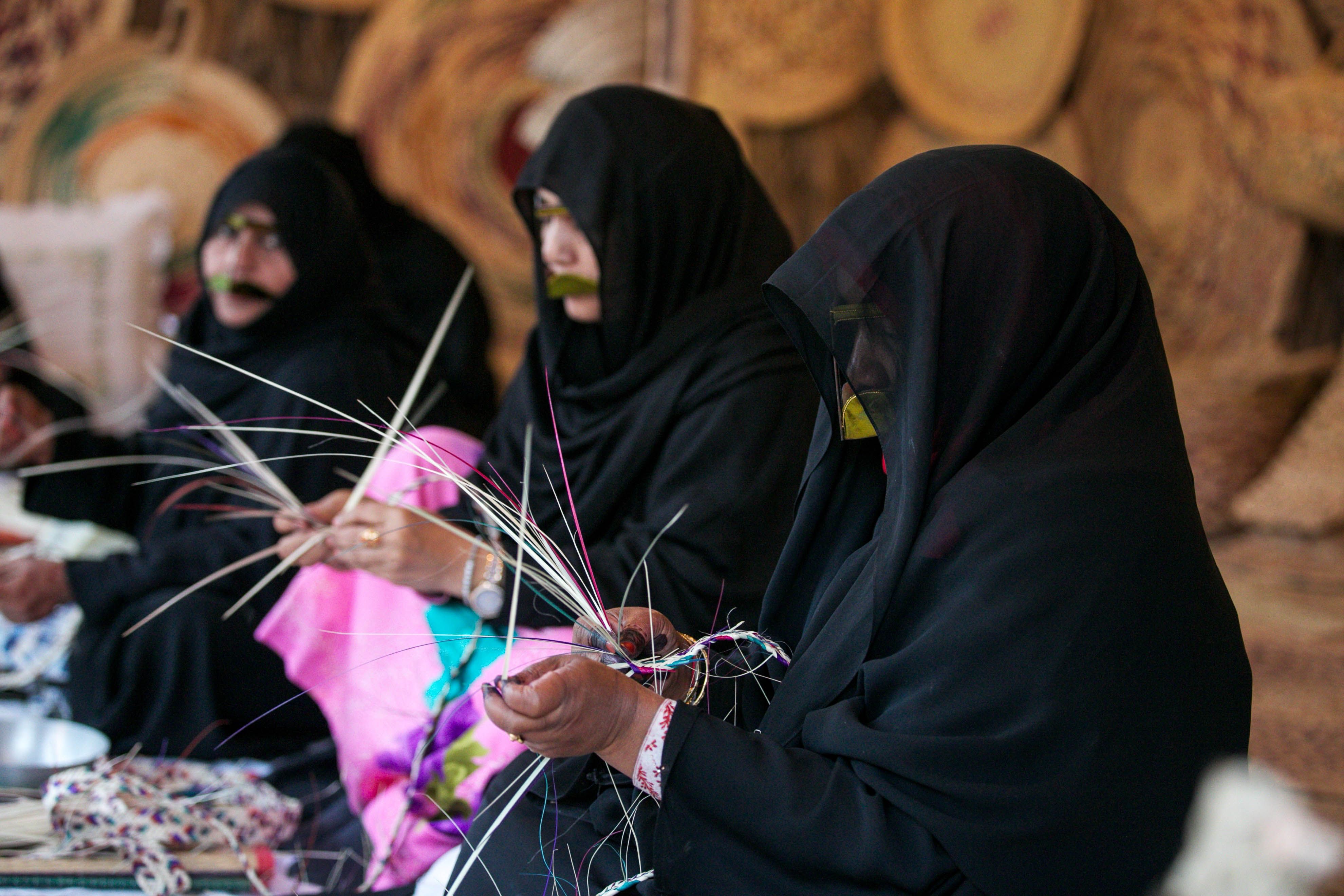
Ancient crafts
Al-Sadu is a traditional form of weaving practised by Bedouin women (nomadic Arabs) using sheep, camel and goat wool to create distinctive designs. Up close, these designs are rich in geometric patterns that reflect their social identity and surrounding environment. Back in the day, Al-Sadu was used to create bait al-shaar (tents), tent dividers, ataad (camel accessories), saddles, straps and more. Sadu was inscribed on the UNESCO List of Intangible Cultural Heritage in Need of Urgent Safeguarding in 2011.
Khoos sees male and female artists using date palm leaves to weave or braid functional objects.
A traditional form of decorative embroidery practised by Emirati women is Talli. This is a beautiful amalgamation of cotton or silk threads intertwined with gold and silver threads to decorate collars, sleeves and hems of the kandoora and thawb (traditional women's robes). Creating this beautiful embroidery is a time-consuming and complex process that requires patience and concentration.
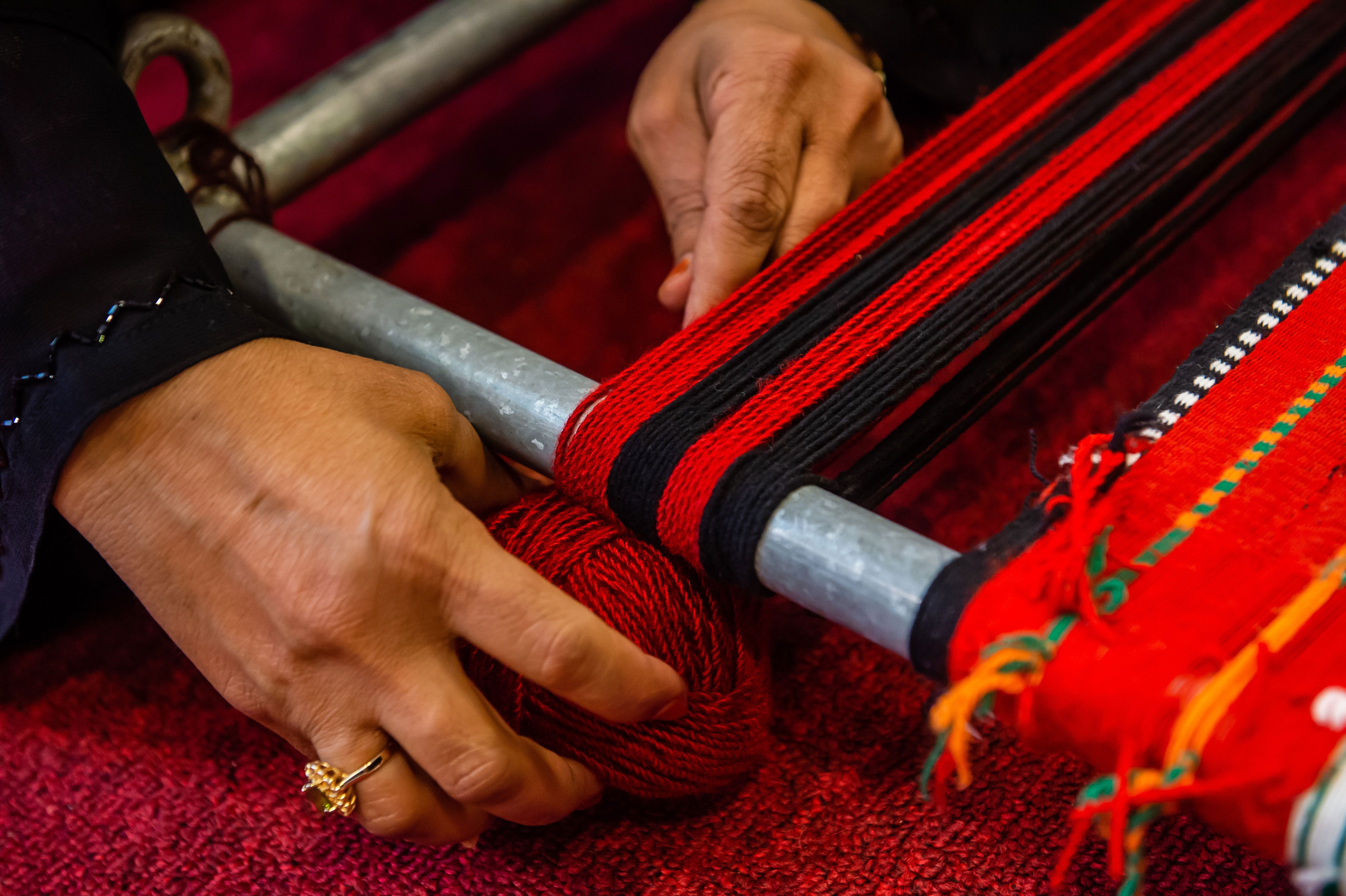
The Cultural Foundation
The Cultural Foundation, located near Qasr Al Hosn, is the heart of Abu Dhabi's fine art community.
Inside, you can find a series of regular programmes that celebrate local and regional culture, showcase a variety of art forms and encourage cross-cultural exchanges. Not only will you come across dedicated studio spaces, but there is even a renovated 900-seat theatre! The venue has gained local and international acclaim, and the building has become a modern heritage landmark.
For bookworms and knowledge seekers, step into the 5,250 square metre Abu Dhabi Children's Library, and you will experience a moment of awe. Spread across three floors and designed as a life-size pop-up book with immersive spaces, children will love spending time here! They can lay on soft faux dunes, slowly turning pages of their favourite book or get lost in the oasis inspired-landscape with a falaj water channel (ancient irrigation system) flowing with books.
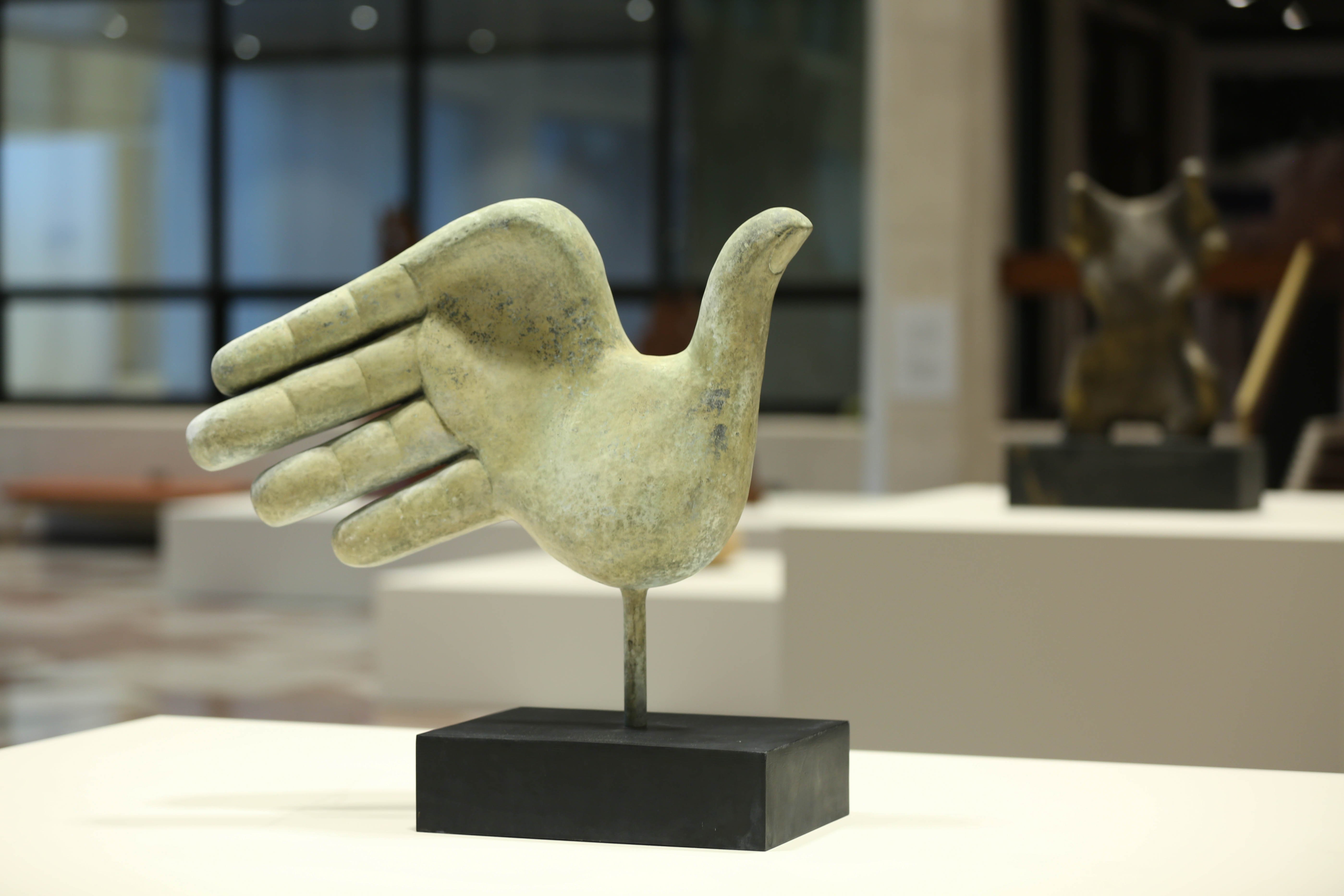
Bait Al Gahwa
Bait Al Gahwa preserves and shares the heritage of Emirati Gahwa, where each cup tells a story of hospitality, generosity, and tradition. Guests are invited to experience the ceremonial preparation and serving of Emirati Gahwa, enjoyed with dates, reflecting centuries of cultural practice in the UAE.
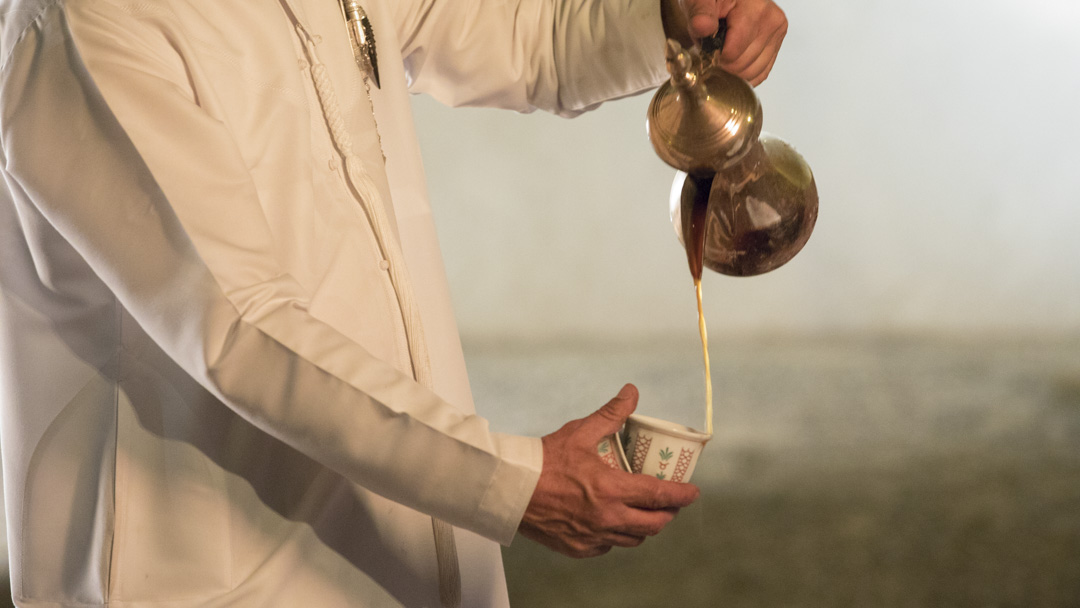
Take a virtual tour
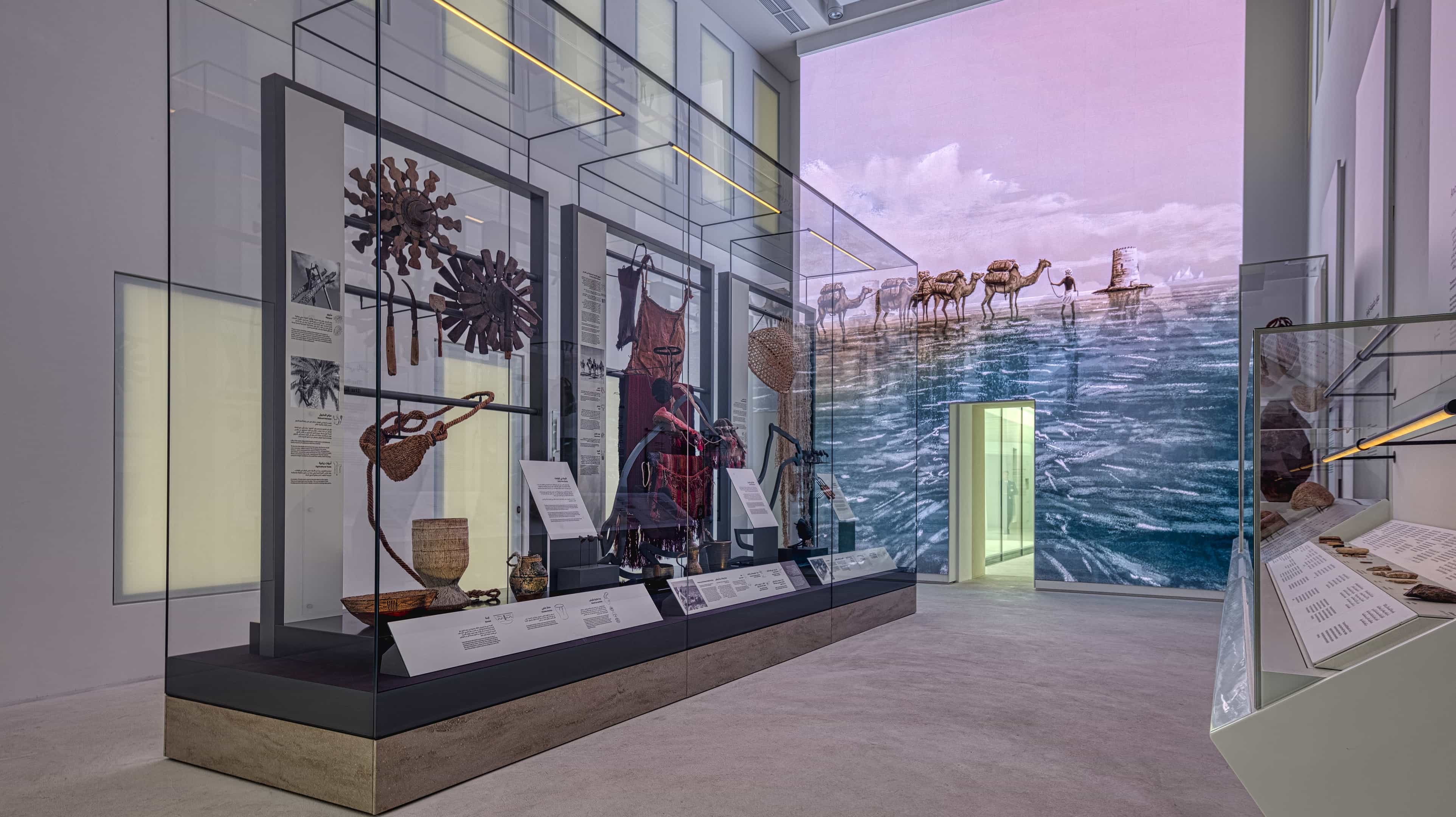
Qasr Al Hosn
Start 360 experience
Frequently asked questions about Qasr Al Hosn
What is the goal of building Qasr al Hosn?
What is inside Qasr Al Hosn?
What is Qasr Al Hosn used for?
In the early days, Qasr Al Hosn housed the National Consultative Council and today it is a museum acting as a national archive, showcasing traditional Emirati crafts.
How much is the entry fee to Qasr al Hosn?
Entry to House of Artisans and landscape is complimentary, excluding Qasr Al Hosn, special workshops and events. The ticket price is AED 30 per person.
Who built Qasr al Hosn in Abu Dhabi?
When does Qasr al Hosn close?
Qasr Al Hosn closes at 10 PM, seven days a week.


